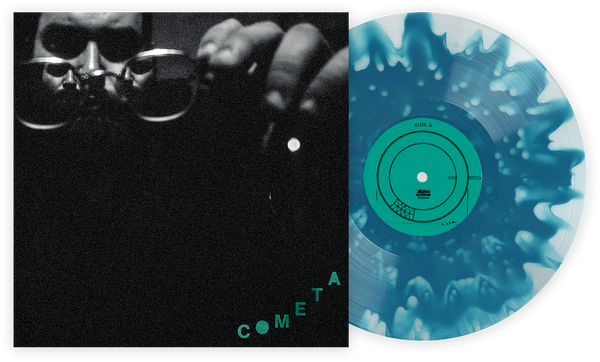There’s a subtle but consistent undercurrent in discussions about vinyl and vinyl replay that for some commentators there is nothing new under the sun. There’s no point to new pressings, equipment and technology because we as a group apparently got it all right at some set point in the past. This view is understandable to an extent—vinyl replay has been with us for nearly a century and stereo playback over 60 years. Given we’ve achieved some other minor technical milestones in that time, it’d be reasonable to believe that peak performance was achieved some time ago.
There are some arguments against this though. Audio equipment does not exist in a vacuum and improvements to materials, technology and design practice in engineering as a whole have an effect on the equipment that we buy and use. Some of these innovations have been of particular relevance to record players and this is significant because the way we design record players is now relatively unusual compared to almost everything else.
As has been noted at points before, a record player is one of the last devices we use in a modern household that is almost exclusively a piece of mechanical engineering. Unlike the explosion in performance we’ve seen from computers, smartphones and other areas relating to computer and software, improvements in mechanical engineering tend to be hard-won and incremental. There is no means by which exponential improvement can be achieved. The only way to “cheat” is to bring new materials and processes to this engineering to improve the results at a given price point.
A good example of this can be seen in the Vinyl Me, Please store at the moment. When building a tonearm, it needs to be as light, rigid as possible and free from resonance. Historically, the go-to material for this was metal. To achieve very strong, light and inert results from metal, however, the costs are fairly considerable. By the time you start looking at titanium or magnesium, the costs of making arms from these materials are considerable.
The arrival of carbon fiber as a mass producible substance has changed this dynamic. The arm fitted to the Pro-Ject 1Xpression in the store is lighter and stiffer than anything that could be fitted to a turntable until relatively recently for a similar price. Neither is this simply a matter of cost reduction. Some high-end brands use carbon fiber at a price where exotic alloys would be practical. If you believe that arm stiffness is everything when designing an arm, carbon fiber has all rival materials beaten, and it is has reduced the cost at which such performance is possible.
Of course, there are some shapes that aren’t practical for such a material. American brand VPI is famous for its one-piece unipivot arms that balance on a hardened metal spike—the curved housing for the spike would be almost impossible to make from carbon fiber. Again, until recently, the best option for this was metal, but technological developments have come to VPI’s aid here. When considering the cost of making a new 10-inch version of their arm for the Prime turntable, the company instead turned to 3D printing. The process means that a perfectly balanced armwand can be produced without having to create expensive additional tooling. The mixture used for the wand also has the benefit of being impressively well-damped. 3D printing is still a relatively new technology but it’s becoming present in the industry, and an arm with a 3D-printed titanium armwand will go on sale from the British company Avid later this year.
Cartridges have also been benefitting from improvements to material science. Historically, the cantilever—the tiny arm that mounts the stylus that retrieves information from the groove of the record—was made from boron. The problem is that boron is becoming an increasingly scarce commodity. It’s a rare substance to begin with and some of the parts of the world it comes from aren’t in the best of health right now, so cartridge manufacturers are looking for alternatives. One of these is sapphire. This has been used with mixed results in the past but thanks to higher production tolerances, companies like Ortofon have made the switch to sapphire in many of their cartridges with little change in performance to their boron predecessors—something that had once been thought impossible. At the same time, new plastics and moulding techniques have helped make ranges of cartridges that are more affordable, easier to handle and more resistant to outside interference than anything before now.
You might reasonably argue that the refinements listed above aren’t about moving the absolute level of performance on from what had been achieved historically, but instead making it more cost effective—and that’s not an unreasonable comment. However, some companies are still engaged in pushing vinyl playback to new heights. In addition to a keen interest in carbon fiber, German company Clearaudio has pushed the development of magnetic bearings. These are somewhat common in a few industrial applications but generally use electromagnets—needing a constant supply of power.
Clearaudio has spent years perfecting “passive” magnetic bearings that don’t need electrical power and provide nigh on frictionless contact, improving efficiency and dropping the mechanical noise floor of the player that uses them. These bearings simply weren’t possible as a series production item as recently as the turn of the century.
One company is even busy trying to alter the actual manner in which a record is played. DS Audio is a Japanese company that produces a small range of extraordinary phono cartridges. Instead of a tiny magnetic force being used to generate a signal, the DS Audio units have an optical sensor which detects and relays the movements of the cantilever. This reduces the operating mass of the cartridge to almost zero and ensures that the movement of the cantilever is unaffected by any magnetic flux, which is the case in every other cartridge on the market. Crucially, this technology isn’t new but the original implementations were so hamstrung by the limitations of the technology at the time that they were barely functional. By revisiting the idea with the best that the 21st century has to offer, DS Audio has produced reliable optical cartridges that are capable of incredible performance.
The most significant aspect of this continuing development and innovation is that high quality becomes democratized. When people say that some designs from the ’60s and ’70s are still competitive with anything launched today, they are broadly correct, but the equipment they’re referring to was unquestionably high-end when launched and the price adjusted for inflation would be extremely high. What the continuing innovation in vinyl replay is doing is allowing many of us to get close—or in some cases exceed—the gold standard of vintage high-end equipment at prices that don’t require us to part with a kidney. If that isn’t reason to keep pushing for innovation, I don’t know what is.
Ed is a UK based journalist and consultant in the HiFi industry. He has an unhealthy obsession with nineties electronica and is skilled at removing plastic toys from speakers.
Join the Club!
Join Now, Starting at $44Exclusive 15% Off for Teachers, Students, Military members, Healthcare professionals & First Responders - Get Verified!








